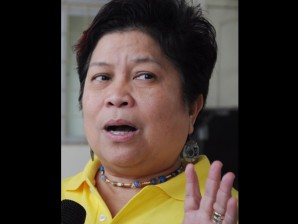Community relocations to start next year–DSWD
BAGUIO CITY—Beginning next year, the government will start moving whole communities, mostly in the eastern coast of northern Luzon, to safer areas.
A national geological hazard map has determined these areas to be vulnerable to extreme climate conditions, Social Welfare Secretary Corazon Soliman said here on Wednesday.
Given the massive state of devastation triggered by rains and floods in northern Mindanao this month, the government could use its calamity fund to build new communities for people living on the eastern coastlines of Isabela and Aurora in Luzon down to Samar and Leyte in the Visayas, Soliman said.
The Department of Budget and Management has allocated up to P300 million for the rehabilitation and relocation of the affected families.
“The national calamity fund is for disaster mitigation and not just relief,” Soliman said, which is why it could help jump-start the government’s relocation program.
Article continues after this advertisementMoving homes or villages away from danger zones is a task of local governments under the 1991 Local Government Code, she said.
Article continues after this advertisementBut she said the Department of Social Welfare and Development was taking a stand regarding relocation because “the Department of Environment and Natural Resources and the Office of Civil Defense have not been remiss about [determining where the dangerous areas are located] and warning people about those dangers.” She said some of the Mindanao disaster areas she visited this week should have been cleared much earlier.
Rising waters
Soliman said the terrain of flooded communities in northern Mindanao had always been vulnerable to rising waters.
“But the damage was worsened by illegal logs,” she said. Houses and people were swept away by illegally cut logs that pummeled villages with the rushing flood waves, smashing everything in their path, she said.
The government, meanwhile, has received over $12.6 million in foreign donations and pledges for victims of Tropical Storm “Sendong,” according to the Department of Foreign Affairs.
In a statement, the DFA said that as of December 28, it had received $12,613,473.87 worth of aid in cash and kind from foreign governments as well as from Filipino communities and individuals abroad.
Top donors included the United States, Australia, China, Czech Republic, Republic of Korea, Indonesia, New Zealand, Japan, Spain, Ireland, Malaysia, Singapore, Chile, Thailand, Denmark, Belgium, Italy, Switzerland and Oman.
Help from Filipino communities
Filipino communities around the world also sent in assistance. The Filipino community in the US Northeast sent $11,170 in cash coursed through the Philippine consulate in New York, while other Filipinos collected $8,287.80 in cash. The Filipino community in Guam donated $3,956 in cash, while the Laguna Association of Guam gave $500.
The Filipino community in Hawaii raised $44,000 in cash and pledges.
Other donations included $1,000 in cash from the Filipino community in Malaysia, $3,921.45 from the Filipino community in France, $1,094.25 from Filipinos in Myanmar, $2,275.30 from Filipinos in Xiamen and $195.95 from the Philippine consulate in Barcelona.
Private individuals and businesses have also donated to the cause. Russian businessmen gave $20,000 in pledges, and the Dalai Lama Trust provided $50,000 in pledges. The Chinese Chamber of Commerce in Guam provided $14,420 in cash, and the Philippine consulate in Guam collected $2,895.
On December 22, the United Nations launched a consolidated flash appeal for humanitarian assistance.
Meanwhile, the Department of Education (DepEd) has been working on remedies to bring students in Iligan and Cagayan de Oro cities back to school on January 3. Among these are the building of makeshift classrooms and the transfer of displaced students to nearby schools.
DepEd spokesperson Tonisito Umali said the department has been working with other government agencies to relocate evacuees currently housed in schools.
If these remedies are not possible, DepEd will consider postponing classes in these areas, Umali said Thursday.
He said the DepEd will make its final announcement on January 1. With reports from Tina Santos and Tarra Quismundo
